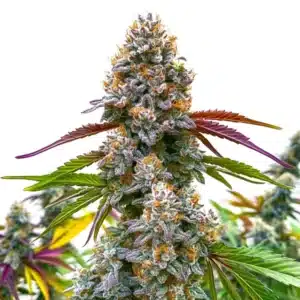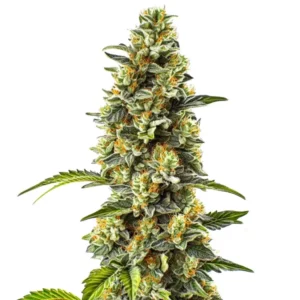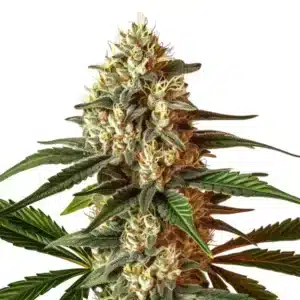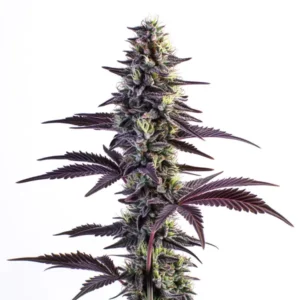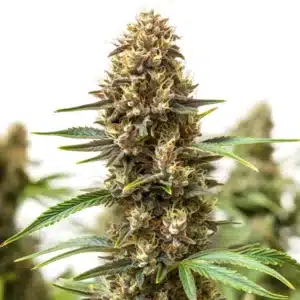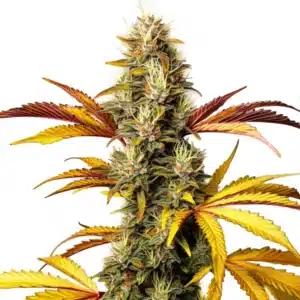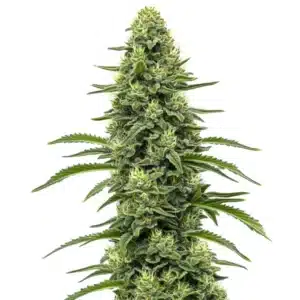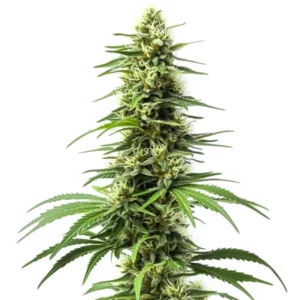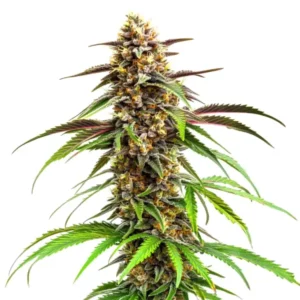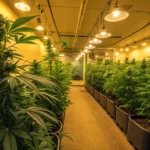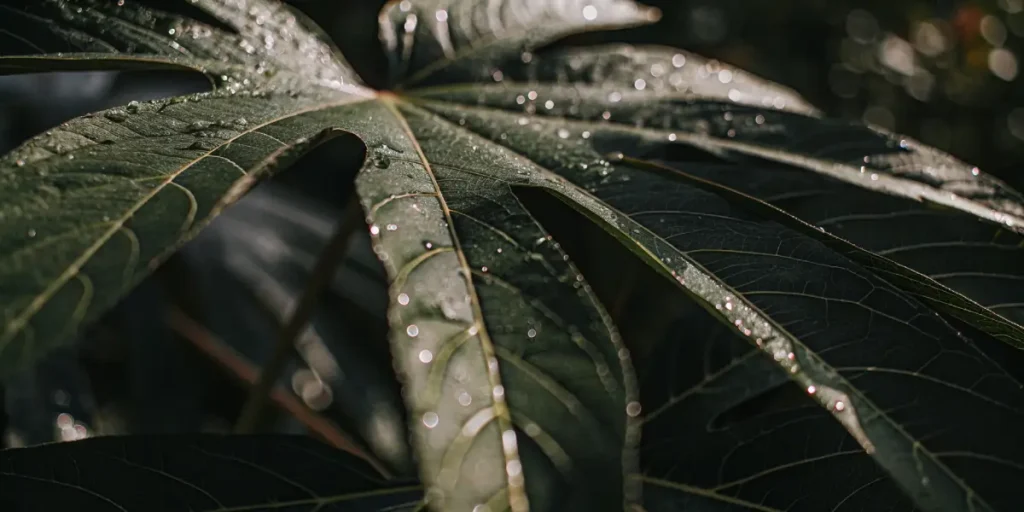
What Are Plant Photoreceptors?
Plant photoreceptors are special proteins in plants that detect light. These remarkable proteins play a critical role in how plants grow and thrive. Imagine them as the plant’s eyes, sensing the light and telling the plant how to respond.
For those growing cannabis, knowing what plant photoreceptors are can mean the difference between a thriving garden and a mediocre one. These photoreceptors help plants understand when to grow leaves, when to flower, and even when to rest. They are your plant’s internal calendar.
Recommended Strains
Critical Daddy Purple
|
|
THC | 19% (Medium) |
|
|
Type | Feminized |
|
|
Yield | High |
|
|
Phenotype | 50% Indica / 50% Sativa |
Strawberry Cough
|
|
THC | 19% - 23% (Medium) |
|
|
Type | Feminized |
|
|
Yield | Medium |
|
|
Phenotype | 30% Indica / 70% Sativa |
In cannabis cultivation, knowing plant photoreceptors and light response is vital. Whether you’re a first-time buyer or an experienced grower, knowing how these proteins work helps in selecting the right strains and optimizing growth conditions.
Types of Plant Photoreceptors
There are several types of plant photoreceptors, each responding to different wavelengths of light. The main types include phytochromes, cryptochromes, and phototropins. These are not just fancy words; they are the key to unlocking your plant’s potential.
Phytochromes respond mainly to red and far-red light. Cryptochromes are sensitive to blue light and ultraviolet-A rays. Phototropins also respond to blue light, but they are more about directing growth towards the light. These types of plant photoreceptors are essential in guiding the plant’s development.
Knowing what are plant photoreceptors at a deeper level involves exploring their genetic and biochemical pathways. Each type of photoreceptor activates specific genes that regulate plant growth and development. By manipulating these pathways, growers can potentially enhance plant performance under varying light conditions.
The diversity of plant photoreceptors allows plants to thrive in different environments. For instance, in shaded areas where light quality is poor, plants can rely on specific photoreceptors to maximize their light capture efficiency. This adaptability is key to plant survival and productivity, especially in fluctuating natural environments.
Promos & Deals
Plant Photoreceptors Function
The function of plant photoreceptors is crucial in plant development. They serve as the plant’s information processors, translating light into growth signals. This is how your plant knows when to sprout, bloom, or shift into other growth stages.
When you think about plant photoreceptors and growth, consider how they affect cannabis strains like Critical Daddy Purple. This strain relies on photoreceptors to maximize its growth potential, ensuring robust yields and potent buds.
Plant photoreceptors function by interacting with various signaling molecules within the plant cells. These interactions trigger a cascade of events that determine how the plant responds to light. By knowing these processes, growers can better predict and influence plant behavior.
Moreover, plant photoreceptors are involved in circadian rhythms, which are the plant’s internal timekeepers. These rhythms dictate when certain physiological activities occur, such as opening of stomata or leaf movements, aligning them with the light cycles in their environment.
How They Affect Growth
Photoreceptors influence many growth aspects, from germination to flowering. They make sure your plants get the light they need to produce energy, which is vital for photosynthesis. Without them, your cannabis plants wouldn’t know when to start forming those dense, sticky buds.
Consider the Strawberry Cough strain. Its growth and flowering are heavily dependent on the correct functioning of photoreceptors. Providing the right light spectrum allows these receptors to optimize the plant’s energy use.
Plant photoreceptors and growth are closely linked through their ability to mediate photomorphogenesis, which is the growth of plants in response to light. This process involves changes in plant structure and form, optimizing their exposure to light for maximum energy acquisition.
Additionally, photoreceptors help plants acclimate to different seasons by adjusting their growth rates and reproductive cycles. By knowing these dynamics, growers can synchronize plant growth with environmental cues, optimizing yield and quality.

Plant Photoreceptors and Light Response
Light response in plants is an intricate dance choreographed by photoreceptors. These proteins trigger responses that help the plant adapt to its environment, adjusting growth patterns based on the light it receives.
Take the Gelato strain, for instance. Its photoreceptors adeptly manage light response to produce a balanced plant structure with dense foliage and flowers. Ensuring these receptors work properly is crucial for achieving high-quality yields.
The plant photoreceptors and light response relationship is a dynamic interaction that allows plants to thrive in varying light environments. Plants can detect subtle changes in light quality, direction, and duration, enabling them to optimize their photosynthetic efficiency.
Photoreceptors also play a role in phototropism, where plants grow towards or away from light sources. This directional growth ensures that leaves are positioned to capture maximum sunlight, enhancing photosynthesis and overall plant health.
Impact on Photosynthesis
Plant photoreceptors play a fundamental role in photosynthesis. They help the plant determine the best times to open their stomata, allowing carbon dioxide in, which is essential for photosynthesis. This, in turn, affects how efficiently the plant can produce energy.
For cannabis growers, this means that by managing light conditions, you ensure your plants are photosynthesizing at optimal levels. This is especially important for indoor growers who rely on artificial lighting to mimic natural conditions.
Knowing plant photoreceptors role in photosynthesis involves recognizing their influence on chlorophyll production and distribution within the plant. Chlorophyll is the pigment responsible for capturing light energy, and its abundance is directly affected by light conditions perceived by photoreceptors.
Moreover, photoreceptors influence the allocation of resources within the plant, directing energy and nutrients to parts of the plant where they are most needed. This regulation ensures that the plant maintains optimal growth and development, even under challenging light environments.

FAQs
What Are Plant Photoreceptors?
Plant photoreceptors are proteins that allow plants to sense and respond to light. They play a crucial role in directing plant growth and development by responding to different light wavelengths.
These sensors are like the plant’s eyes and ears, helping them understand their environment. By knowing how these proteins work, growers can better manage plant growth and maximize yields.
In answering what are plant photoreceptors, it’s important to note that they are integral to the plant’s ability to adapt to changing environmental conditions. This adaptability is crucial for survival and successful reproduction in various ecosystems.
Moreover, plant photoreceptors are involved in regulating the plant’s life cycle, from seed germination to senescence. By influencing these stages, they ensure that the plant’s growth is synchronized with environmental cues, enhancing survival and reproduction strategies.
How Do Plant Photoreceptors Affect Cannabis Growth?
Plant photoreceptors affect cannabis growth by controlling how the plant responds to light. They help regulate when the plant should grow leaves, flower, and even rest. This makes them crucial for achieving optimal growth.
For instance, providing the right light spectrum can enhance the growth of specific strains, ensuring that plants like Critical Daddy Purple reach their maximum potential.
In cannabis cultivation, understanding plant photoreceptors and growth is essential for optimizing yield. By manipulating light exposure, growers can induce desired growth responses, such as faster flowering or increased bud production.
Additionally, plant photoreceptors enable growers to cultivate cannabis year-round by replicating optimal light conditions indoors. This control over light exposure allows for multiple harvests annually, increasing productivity and profitability.
What Types of Light Do Plant Photoreceptors Detect?
Different plant photoreceptors detect different types of light. Phytochromes are sensitive to red and far-red light, cryptochromes to blue and ultraviolet-A light, and phototropins primarily to blue light.
Knowing these types of plant photoreceptors helps growers provide the right light conditions, ensuring healthy plant development and efficient energy use.
By knowing what types of light plant photoreceptors detect, growers can tailor their lighting systems to match the specific requirements of their plants. This customization is key to enhancing plant vigor and productivity.
Moreover, different stages of plant growth may require varying light spectrums. For example, seedlings might benefit from blue light for vegetative growth, while red light can be more effective during the flowering stage. Adjusting light quality based on plant needs can significantly impact overall plant health and yield.
How Can I Use Plant Photoreceptors to Improve Yields?
To improve yields using plant photoreceptors, focus on managing light conditions. This includes adjusting light cycles and using the correct light spectrum for your specific cannabis strain.
For example, strains like Strawberry Cough benefit from carefully controlled light environments, leading to improved growth and flowering.
By leveraging plant photoreceptors function, growers can manipulate plant responses to achieve desired growth outcomes. Fine-tuning light exposure can induce faster maturation, larger buds, and increased resin production, which are all desirable traits in cannabis cultivation.
Furthermore, understanding the light requirements of different cannabis strains allows for precise adjustments in light intensity, duration, and spectrum. This precision ensures that plants receive optimal conditions for growth, maximizing both yield quantity and quality.
Do Plant Photoreceptors Influence Photosynthesis?
Yes, plant photoreceptors greatly influence photosynthesis. They help plants determine the best times to photosynthesize, ensuring efficient energy production and healthy growth.
By knowing how these proteins work, growers can optimize conditions for photosynthesis, leading to better plant health and higher yields.
The plant photoreceptors role in photosynthesis extends beyond light detection; they also regulate the opening and closing of stomata, which are crucial for gas exchange. This regulation ensures that the plant can efficiently uptake carbon dioxide while minimizing water loss.
Additionally, photoreceptors can influence the distribution of photosynthetic activity within the plant, directing resources to areas where they are most needed. This targeted energy allocation supports overall plant health and enhances resilience to environmental stressors.


